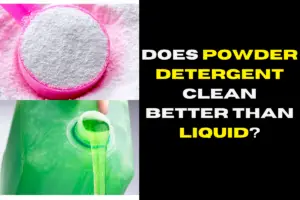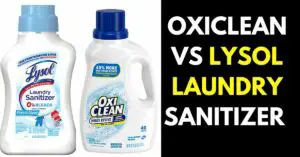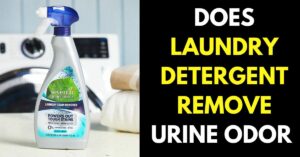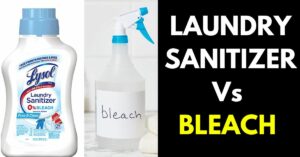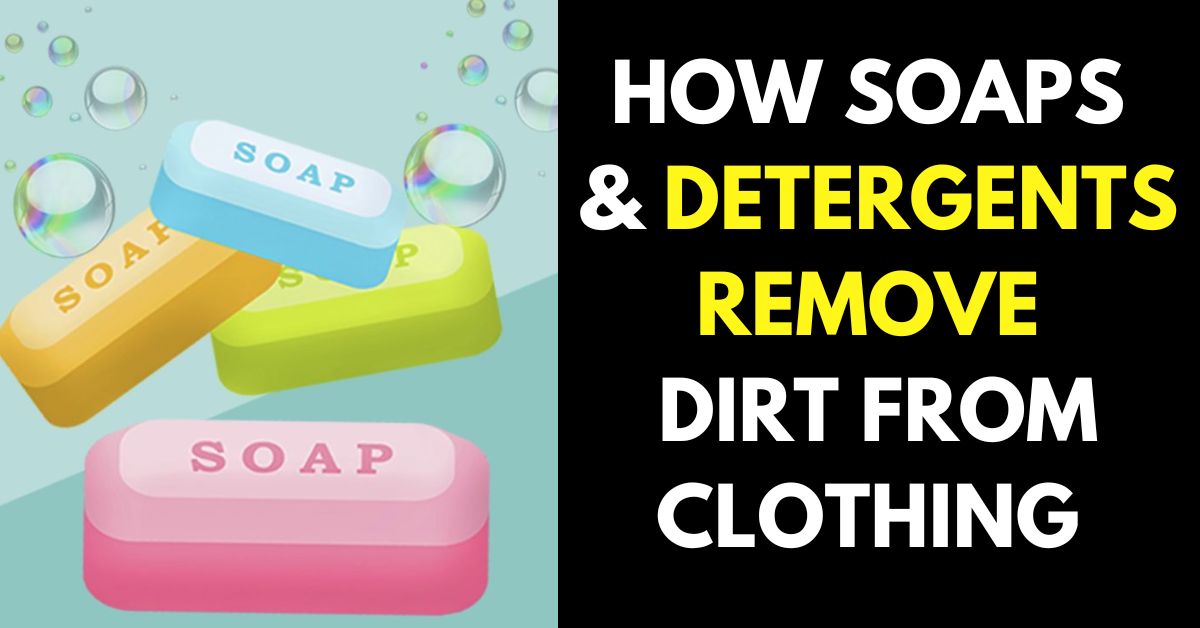
Have you ever wondered how your favorite shirt goes from dirty to clean in just one wash? It’s all thanks to the amazing power of soaps and detergents. These cleaning agents work together with water to remove dirt, oil, and other stains from your clothing. The secret lies in their unique chemistry, which forms tiny clusters called micelles that trap and lift away dirt and oil.
So the next time you do your laundry, take a moment to appreciate the hard work that goes into removing the dirt from your clothing and keeping them looking their best.
How Soaps and Detergents Remove Dirt from Clothing

Soaps and detergents are both surfactants, meaning that they contain molecules with both hydrophobic (water-repelling) and hydrophilic (water-attracting) ends.
When soap or detergent is added to water, the hydrophobic ends of the molecules attach to dirt and oil on clothing, while the hydrophilic ends attach to water molecules. This forms tiny clusters called micelles, which trap the dirt and oil inside.
As the clothing is agitated in the water, the micelles get mixed in with the dirt, loosening and lifting it away from the fabric. Then, as the water is drained away, the micelles with the dirt and oil are also carried away, leaving the clothing clean.
Additionally, the alkaline nature of soap and detergent helps to break down stains and loosen dirt from clothing fibers, making it easier to remove during the washing process.
How Do Soaps and Detergents Clean Dirt?
Soaps and detergents are both surfactants, meaning that they contain molecules with both hydrophobic (water-repelling) and hydrophilic (water-attracting) ends. When soap or detergent is added to water, the hydrophobic ends of the molecules attach to dirt and oil on clothing, while the hydrophilic ends attach to water molecules. This forms tiny clusters called micelles, which trap the dirt and oil inside.
As the clothing is agitated in the water, the micelles get mixed in with the dirt, loosening and lifting it away from the fabric. Then, as the water is drained away, the micelles with the dirt and oil are also carried away, leaving the clothing clean.
In addition, the alkaline nature of soap and detergent helps to break down stains and loosen dirt from clothing fibers, making it easier to remove during the washing process.
What Is the Chemistry Behind Soap?
The chemistry behind soap involves a process called saponification, which is a chemical reaction between a fat or oil and a strong base, such as sodium hydroxide (NaOH) or potassium hydroxide (KOH).
During saponification, the strong base breaks down the fat or oil into two components: glycerol and fatty acid salts (also known as “soap”). The fatty acid salts have both hydrophobic and hydrophilic properties, which allow them to interact with both water and oils or dirt on the skin or clothing.
When soap is added to water, the hydrophobic tails of the fatty acid salts are attracted to oils and dirt, while the hydrophilic heads are attracted to the water molecules. This causes the soap molecules to surround the dirt and oil particles, forming micelles that can be easily rinsed away.
Why Does Soap Remove Dirt?
Soap is effective at removing dirt because of its unique chemical properties. Soap is a surfactant, which means it has both hydrophilic (water-attracting) and hydrophobic (water-repelling) properties.
When soap is mixed with water, the hydrophobic ends of the soap molecules attach to dirt, oil, and other particles on the surface being cleaned, while the hydrophilic ends are attracted to the water molecules. This creates tiny clusters called micelles, which trap the dirt and oil particles inside.
As the soapy water is agitated or rinsed away, the micelles carrying the trapped dirt and oil particles are lifted away with the water, leaving the surface clean.
Additionally, soap has an alkaline nature, which helps to break down stains and loosen dirt from surfaces. This makes it easier for the soap to remove dirt and stains during the cleaning process.
What Components of the Soap Enables the Removal of Dirt?
The components of soap that enable the removal of dirt are its surfactant properties, specifically its ability to form micelles.
Micelles are tiny clusters of soap molecules that are formed when soap is mixed with water. The hydrophobic ends of the soap molecules are attracted to dirt, oil, and other particles on the surface being cleaned, while the hydrophilic ends are attracted to the water molecules.
This creates a sphere-like structure in which the hydrophobic ends are facing inward, surrounding the trapped dirt and oil, and the hydrophilic ends are facing outward, interacting with the water molecules.
As the soapy water is agitated or rinsed away, the micelles carrying the trapped dirt and oil particles are lifted away with the water, leaving the surface clean.
Does Detergent Kill Bacteria
Most detergents do not have antimicrobial properties, meaning they are not designed specifically to kill bacteria or other microorganisms. However, detergents can still help to remove bacteria from surfaces by lifting and washing away the bacteria along with other dirt and debris.
In fact, for most cleaning tasks, simply removing dirt and debris from a surface is enough to reduce the number of bacteria present. This is because bacteria require nutrients and a suitable environment to survive and multiply. By removing these resources, the growth of bacteria can be slowed or stopped.
Some specialized detergents may contain antibacterial agents, such as triclosan or benzalkonium chloride, which can help to kill or inhibit the growth of bacteria. However, these types of detergents are typically used in settings where infection control is a high priority, such as hospitals or food processing facilities.

